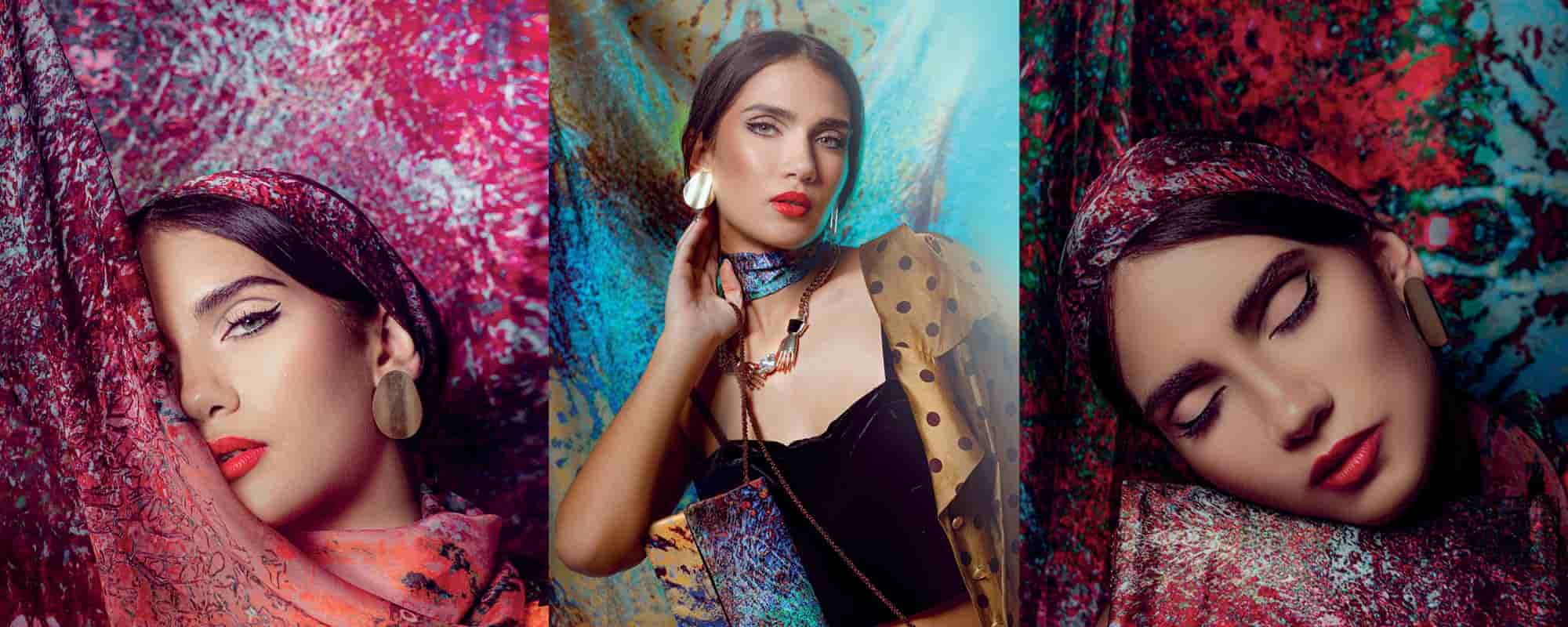How historic pottery sherds outlived their makers and inspired a contemporary artist.
When Dr Ing. John Charles Betts embarked on his latest research endeavour analysing ancient pottery fragments, he couldn’t have foreseen the potential artistic inspiration it would set off. THINK sat down with local designer Saz Mifsud and Dr Betts to talk about this unlikely combination.
‘This all started because I was looking at the microscopic images of these materials, and they turned out to be more colourful and interesting than ever,’ Betts said, explaining that the pottery fragments dating back some 7000 years revealed various unexpected shapes and colours.
The shapes visible in these images are a result of materials purposely included in the pottery to reinforce the final product, as well as natural materials such as foraminifera – single cell creatures that produce a shell. These shells survived the tempering process because of the relatively low firing temperatures used to make these artefacts at the time.
Saz explains, ‘I initially received an email from John with a few images and cross-sections of various samples of pottery showing different concentrations of the individual materials. I was particularly struck by these previously mentioned foraminifera,’ adding that the images reminded her strongly of marbled paper.
Saz went on to explain that her collections are often a mix of her personal experiences and photographs of her everyday life interpreted into the stunning designs and patterns that have now become familiar to many Maltese fashionistas.
‘This time I was very lucky and the inspiration landed on my lap without me having to look for it. It took me a few weeks, but I soon started experimenting digitally and mixing the pictures with a few textures that I had seen over the previous months,’ she said.
Saz added that what ultimately caused her designs to pop, was a visit to the minerals room of the Natural History Museum in London.
‘The stunning colours you see there don’t look like they would occur naturally,’ she said, adding that many of these hues ended up in her Sirocco range. ‘That’s how the designs started to take on a new life of their own,’ she laughed, adding that Betts was ultimately very surprised to see the final result.
Betts went on to explain that he was thrilled by the final result, and that interdisciplinarity was one of his favourite aspects of his work.
‘As a department, we try to collaborate with many other departments, and we are currently working with the Department of Biology and an undergrad Biology student who is researching the foraminifera for instance. However, this is the first collaboration of its kind, with its more artistic and commercial tinge.’
I am hopeful that there are other opportunities and ideas to be explored in our research, and I also think that this project will help raise awareness about the projects we carry out and about the fact that this is not necessarily a purely scientific endeavour. There is a beauty and an inspiring aspect to archaeology, and it welcomes people from all backgrounds, not just scientists.
Saz nodded enthusiastically and said that she had felt utterly inspired by the way that the past had informed the future in such a way.
‘I viewed it as a piece of history that we can carry with us. And the scarves will ultimately outlive us in the same way these pottery fragments did the people who made them.’
The pottery sherds that inspired Saz’s ‘Sirocco’ range were part of the MaltaPot and CoFIPoMS Projects.

Photos by Maria Galea
Author
-
Martina writes on a freelance basis for a number of publications including Think Magazine. She works in children’s publishing in London and has a background in journalism. Previous writing credits include MaltaToday and other other local content writing agencies. Her favourite topics to write about include lifestyle, culture and health issues. She also enjoys interviewing people and learning about new topics as part of her research. She holds an MA in Publishing and previously read for a BA in English at the UM. In her free-time, she can be found sipping tea in coffee shops, reading or trying out new hobbies.





Comments are closed for this article!